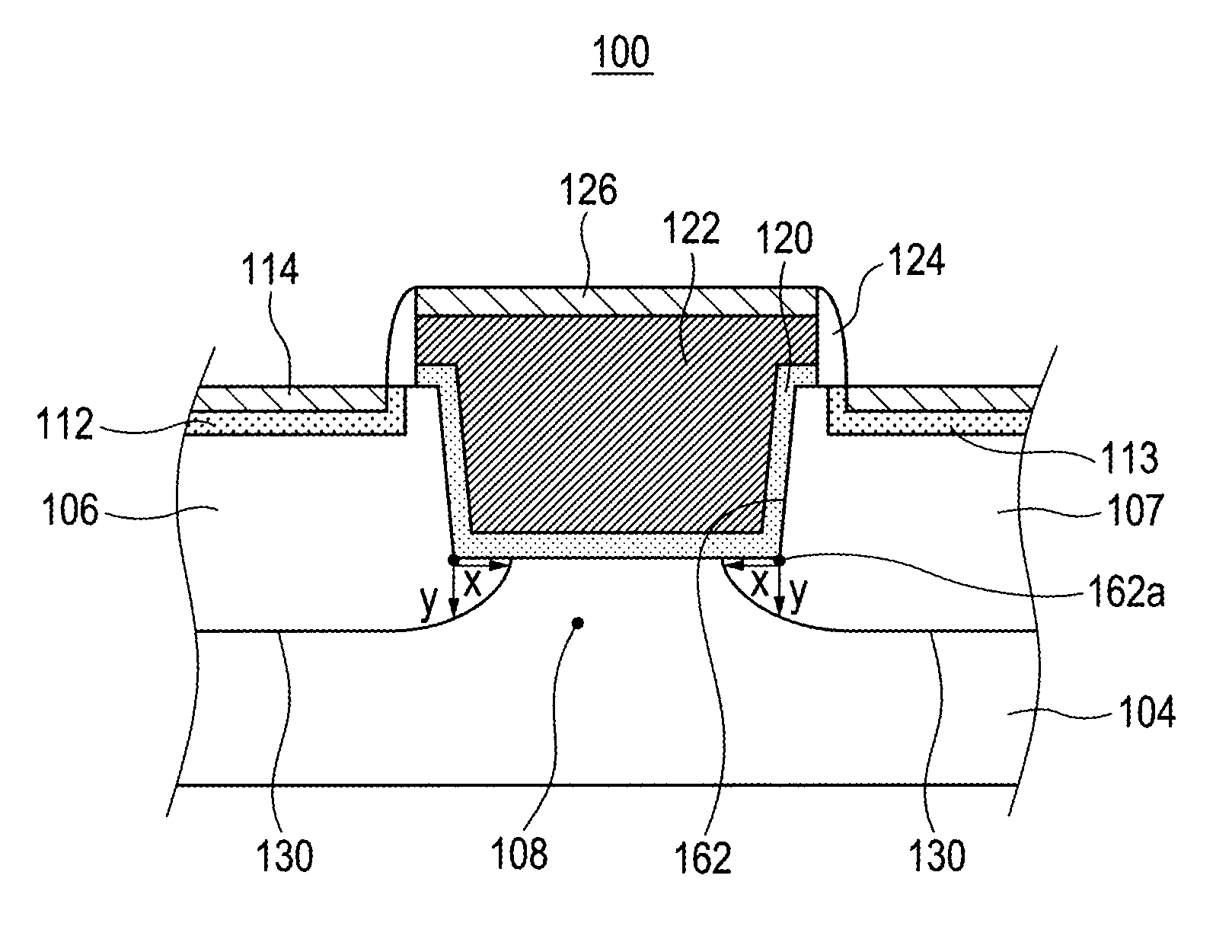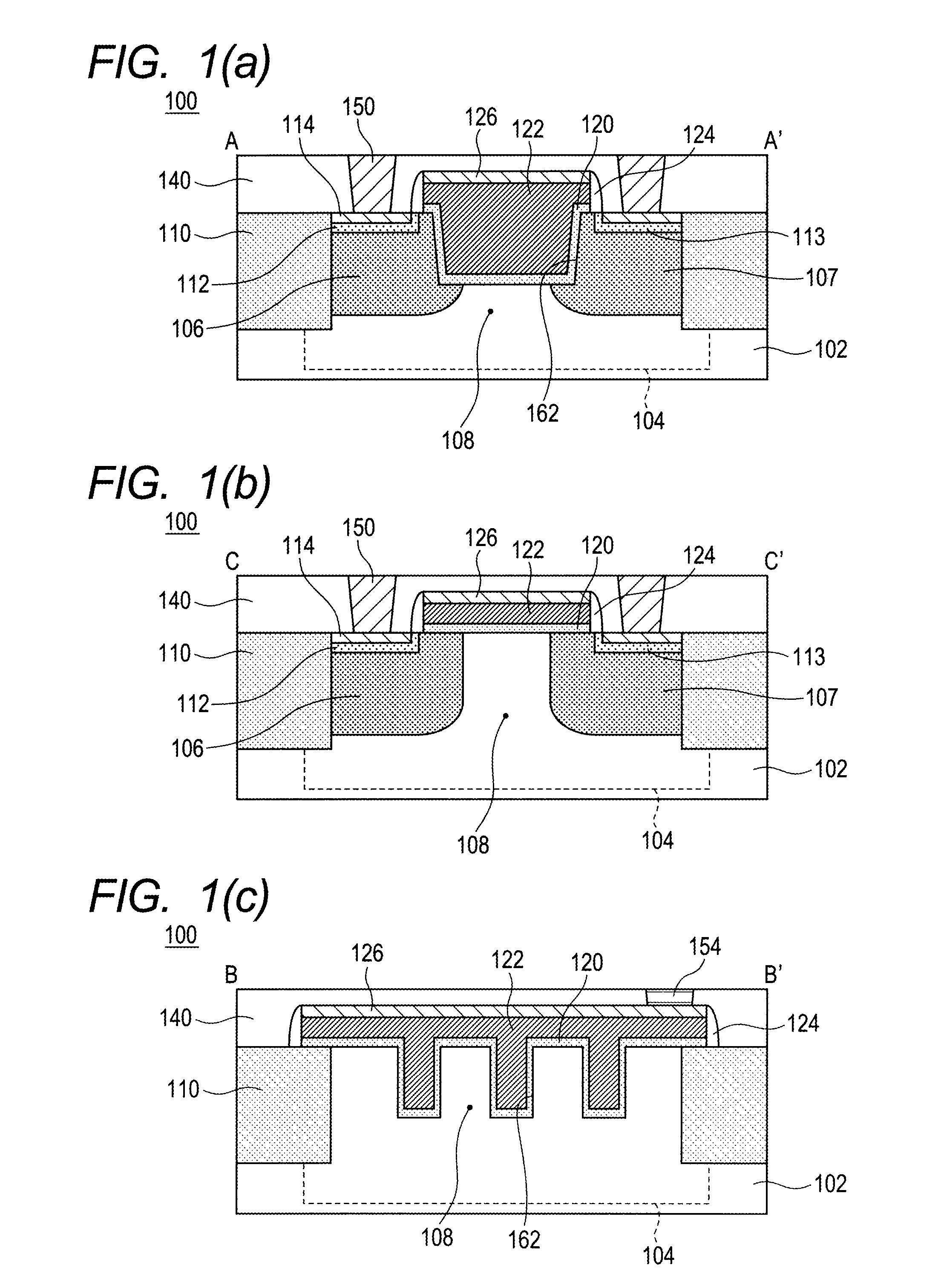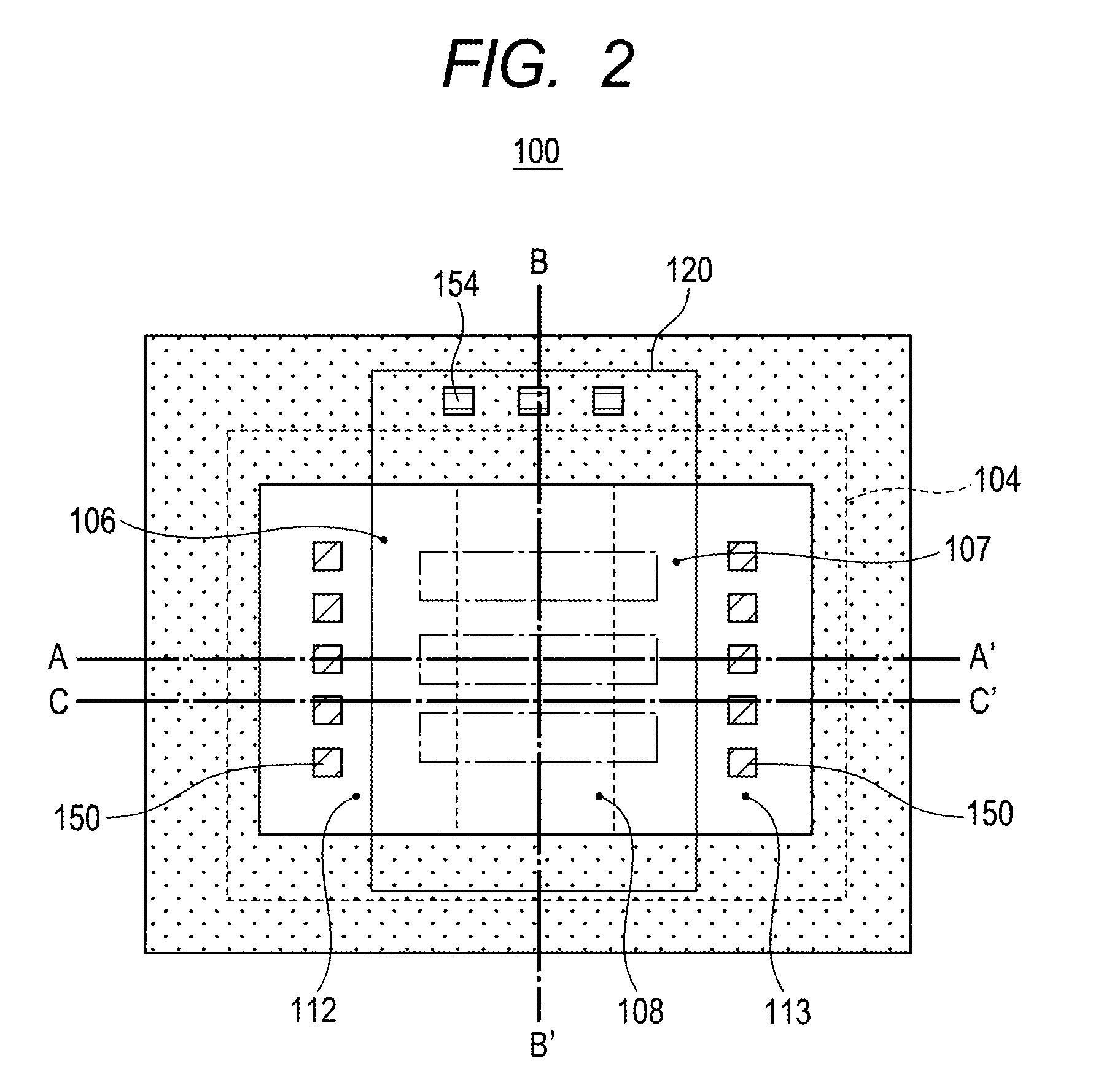Semiconductor device
a technology of semiconductors and transistors, applied in the direction of semiconductor devices, basic electric elements, electrical equipment, etc., can solve the problems of deteriorating the long-term reliability of the device, and achieve the effect of enhancing the long-term reliability of the transistor
- Summary
- Abstract
- Description
- Claims
- Application Information
AI Technical Summary
Benefits of technology
Problems solved by technology
Method used
Image
Examples
first embodiment
[0045]FIGS. 1(a), 1(b), and 1(c) are sectional views illustrating an embodiment of a semiconductor device according to the present invention. FIG. 2 is a plan view illustrating the embodiment of FIGS. 1(a), 1(b), and 1(c). FIG. 1(a) is a section along the line A-A′ of FIG. 2; FIG. 1(b) is a section along the line C-C′ of FIG. 2; and FIG. 1(c) is a section along the line B-B′ of FIG. 2. To ensure that the configuration is easily understandable, in FIG. 2 each region is indicated by lines alone. In the following, a case where a first conductivity type is an n-type and a second conductivity type is a p-type is described as an example. However, a reverse case may also be applied to the present invention.
[0046]A semiconductor device 100 includes a substrate 102 and transistors formed on one surface of the substrate 102. The substrate 102 can be a semiconductor substrate such as a silicon substrate. A device isolation insulating film 110 is formed on one surface of the substrate 102. The ...
second embodiment
[0089]FIGS. 13(a), 13(b), and 13(c) are sectional views illustrating an embodiment of a semiconductor device according to this embodiment. A semiconductor device 100 in this second embodiment has a similar planar configuration to that shown in FIG. 2. FIG. 13(a) is a section along the line A-A′ of FIG. 2; FIG. 13(b) is a section along the line C-C′ of FIG. 2; FIG. 13(c) is a section along the line the B-B′ of FIG. 2. In the following, a case where a first conductivity type is an n-type and a second conductivity type is a p-type is described as an example. However, a reverse case may also be applied to the present invention.
[0090]In this embodiment, the shape of the first offset region 106 and the second offset region 107 is different from that shown in FIGS. 1(a), 1(b), and 1(c). In this embodiment, the first offset region 106 and the second offset region 107 each has a depth, in the area where they contact the bottom of trench 162, greater than their depth where they make contact w...
PUM
 Login to View More
Login to View More Abstract
Description
Claims
Application Information
 Login to View More
Login to View More - R&D
- Intellectual Property
- Life Sciences
- Materials
- Tech Scout
- Unparalleled Data Quality
- Higher Quality Content
- 60% Fewer Hallucinations
Browse by: Latest US Patents, China's latest patents, Technical Efficacy Thesaurus, Application Domain, Technology Topic, Popular Technical Reports.
© 2025 PatSnap. All rights reserved.Legal|Privacy policy|Modern Slavery Act Transparency Statement|Sitemap|About US| Contact US: help@patsnap.com



